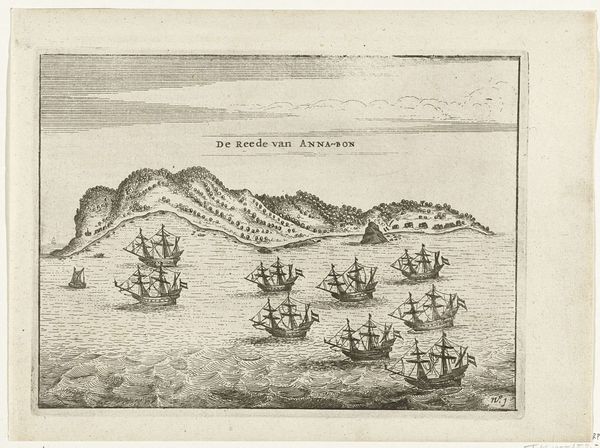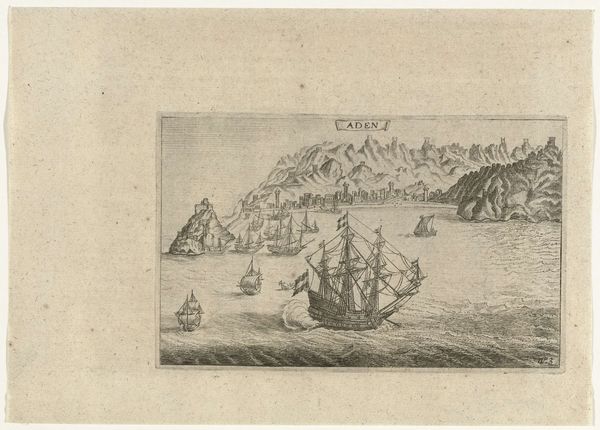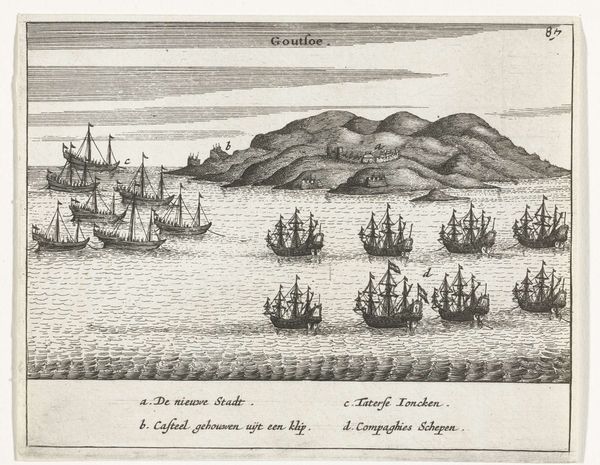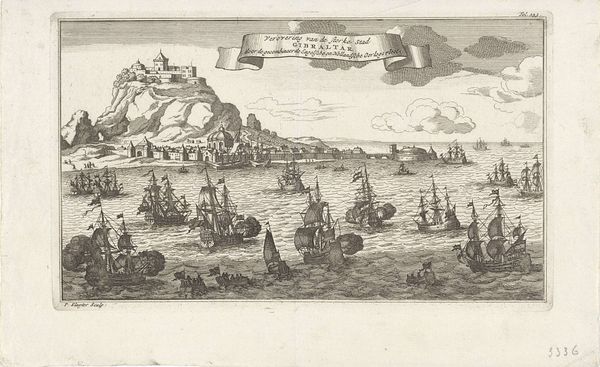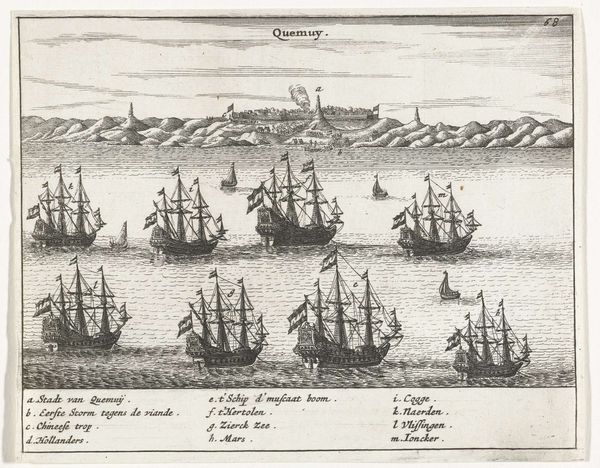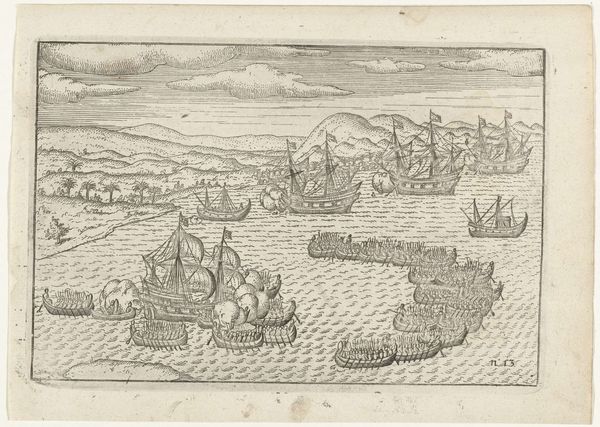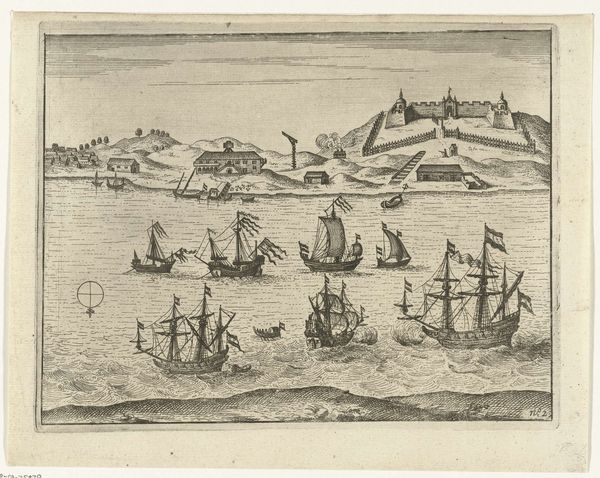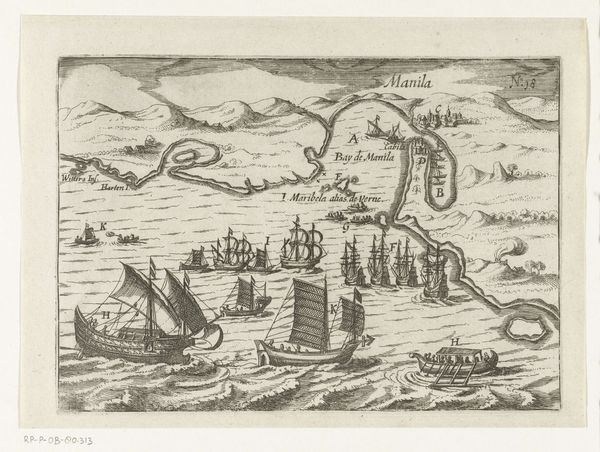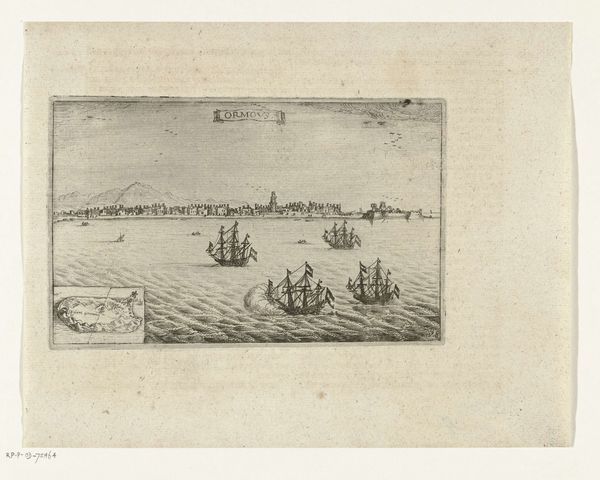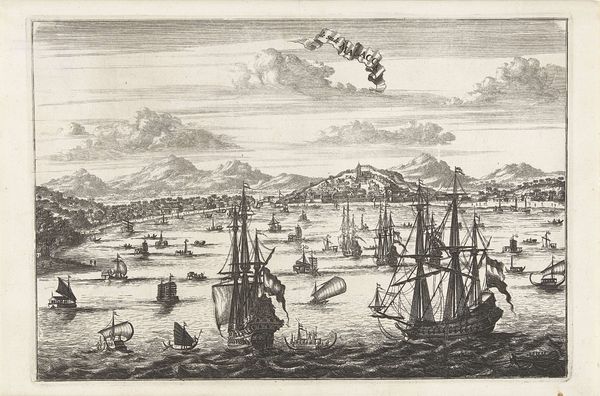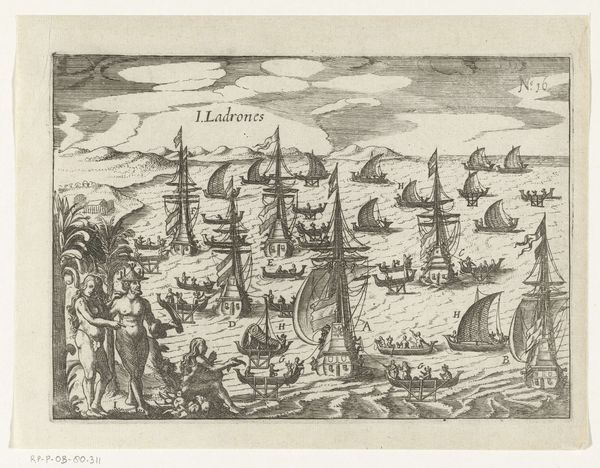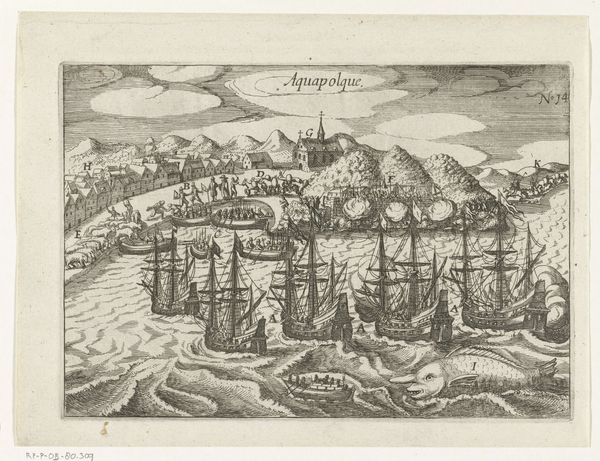
print, engraving
#
dutch-golden-age
# print
#
landscape
#
cityscape
#
history-painting
#
engraving
Dimensions: height 150 mm, width 205 mm
Copyright: Rijks Museum: Open Domain
Editor: This is an engraving entitled "Zeven schepen voor Jakarta, 1607," dating back to the 1640s. It depicts seven ships approaching the coastline of Jakarta, which is labeled above the image of the town. I’m struck by the almost documentary feel of it, like a visual record. How do you interpret this work, especially considering its historical context? Curator: It's crucial to remember that images like this weren't simply neutral records. This piece visualizes Dutch power during a period of intense colonial expansion. Consider the composition: the seven ships dominate the foreground, an explicit assertion of maritime strength against the backdrop of Jacatra. What narrative does that dominance tell? Editor: It definitely conveys a sense of control. The ships seem poised to… stake their claim, almost? But is there a darker side that this image perhaps glosses over? Curator: Exactly. We need to examine the brutal realities of colonization: the exploitation of resources and people, the erasure of indigenous cultures, the imposition of European values. This image, likely commissioned by the Dutch, conveniently omits these details. Where is the human cost in this picturesque scene? Whose narrative is privileged here? Editor: So, seeing this print as just a historical landscape painting overlooks its complicity in colonial power dynamics? Curator: Precisely. We must critically examine the visual rhetoric deployed to legitimize colonial endeavors, inviting a re-evaluation of the assumed “truths” embedded within. What would an indigenous artist have created? How can we confront and contextualize difficult colonial pasts to address the contemporary impact of social inequality today? Editor: This has completely changed my perspective. It's no longer just a picture of ships; it's a document of power. Curator: And remembering that changes everything about how we view such a work.
Comments
No comments
Be the first to comment and join the conversation on the ultimate creative platform.
